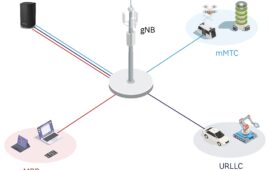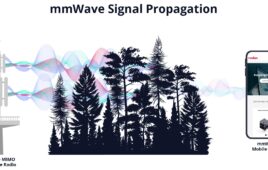With the 3GPP standards release in sight, 5G buzz is almost impossible to avoid. But much of the talk around next generation services focuses on grand promises of super-fast speeds, near non-existent latency, and incredible new use cases rather than the gritty details of progress.
While most consumers may only know Samsung as a handset or appliance company, industry insiders also know the South Korean giant has had a firm hand in many network developments – 5G included. The company last year collaborated with AT&T, T-Mobile, and Verizon on 5G testing, and has historically been Verizon’s primary small cell supplier and one of three major network vendors for Sprint.
So Wireless Week sat down with Samsung’s Vice President of Networks Strategy, Business Development, and Marketing Alok Shah to get a clearer picture on just where things actually stand on 5G ahead of the big announcements that will come at Mobile World Congress.
According to Shah, Samsung and others in the mobile ecosystem started work on 5G core technologies more than five years ago. Last year, he said, work on the technology moved out of the research and development phase and progressed to the proof-of-concept phase, where companies were showing that 5G throughput and handovers are possible.
To date, Shah said Samsung has made substantial progress on the radio unit and the digital unit to support that. But while initial research was around the antenna – how to implement beamforming and algorithms to support mobility – Shah said where engineers are headed now is moving toward a full end-to-end architecture.
“A lot more is going on in the core, in sort of the next generation converged core network that will required for 5G to reach full peak performance, and what comes with that is virtualization,” Shah explained. “And so virtualization at the core network elements but also virtualization at the radio access network as well and these architectures that are encapsulated under virtualized RAN, there’s a lot of progress going on there as well. We’ve solved a lot of the hard problems around the radio side and now we’re moving toward how to drive down cost…and making a lot of progress on the virtualized network and the core.”
As we’ve heard from some operators, Shah noted the industry has seen the most progress around the initial fixed wireless use case and indicated work is also underway on consumer premise equipment to go along with that. Handset development for mobile use cases, he said, will likely be on hold until the 3GPP standards are released because manufacturers don’t want to make millions of devices that won’t work with the standard.
On the operator side, Shah indicated 5G progress will be more varied over the next year.
“In the next year, I think the activities will vary by operator,” Shah said. “Verizon is very focused on proving out the technology at scale, being able to work through the real world business case, and really truly understand what coverage ranges will work in different types of environments as they move toward their planned commercialization in 2018 … Other operators like AT&T, T-Mobile, and others, they’re going to continue to do a lot of testing and validation. They’ll start to increase the scale of what they’re looking at a little bit but they’ve also got that eye toward accelerating the standards process and ensuring that the industry is ready to move forward once that standard gets fixed.”




